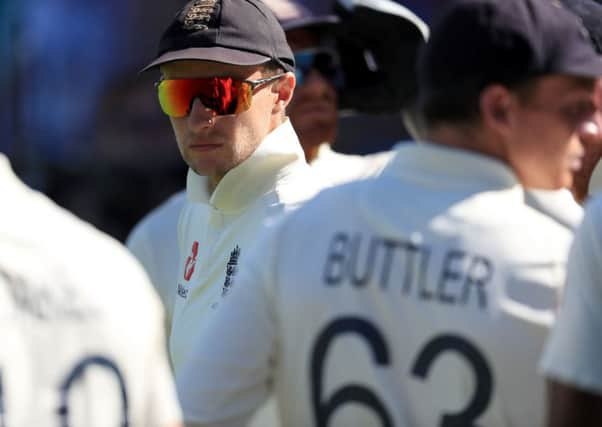Twenty20 internationals should be scrapped


“Less Is More?” You’ve got to be joking. There is now so much cricket that you can barely keep track of it.
One way to ease a schedule that places an intolerable burden on players, coaches and also spectators would be to scrap T20 internationals. Bin them, I say, and confine T20 to domestic/franchise competitions.
Advertisement
Hide AdAdvertisement
Hide AdOf course, there is no chance of that happening so long as the sport continues to be motivated by power and greed, thus bringing it closer into line with football all the time.
But at least football, for all its ills, has the one predominant format of 90 minutes; cricket, by my calculation, will soon have five – Test/first-class; 50-over; T20; T10 and, from next summer onwards, the abominable Hundred.
To watch – or, in my case, not to watch – the T20 series between New Zealand and England that ended on Sunday was to illustrate the state in which cricket exists.
Here we had a five-match bilateral series missing several key players, with England resting Ben Stokes, Jos Buttler, Jofra Archer, Jason Roy and Joe Root.
Why where they rested?
Advertisement
Hide AdAdvertisement
Hide AdBecause there is so much cricket that, if they didn’t take a breather from time to time, they might be premature visitors to the great pavilion in the sky.
Consequently, the series had all the appeal of five friendlies taking place on the other side of the world at an ungodly hour, one hardly enlivened by the fact that England won it following a ‘Super Over’ as they did the 50-over World Cup against New Zealand last summer.
T20 may be enormously popular across the globe, but there is no context to the vast majority of T20 internationals. Granted, there is a T20 World Cup next year and also in 2021, but that England were not seriously preparing for it in New Zealand was evident in terms of the players they rested.
True, they learned that their “bench strength” is strong, as if they did not know already, with the likes of Dawid Malan and Matt Parkinson taking their chance.
Advertisement
Hide AdAdvertisement
Hide AdBut these games go in one ear and out of the other; crowds for Australia’s early-season T20 internationals against Pakistan and Sri Lanka are reportedly one-third down on anticipated levels.
Why is this so?
It’s because such games lack even the glitz and glamour of T20 at its best, as viewed in the various franchise competitions. If you want to see top T20, you can watch the IPL; if you want to see T20 with context – albeit without the same galaxy of talent on show – you can watch our very own T20 Blast.
At least these tournaments have some sort of meaning, some sort of fan base and recognised structure.
T20 internationals, in contrast, have precious little going for them; it has the feel of cricket for cricket’s sake.
Do we need the T20 World Cup?
I could personally live without it.
Advertisement
Hide AdAdvertisement
Hide AdIf we do have to have it, though, do we need bilateral series by way of preparation, or are players getting enough practice/exposure in franchise tournaments?
The problem, as with the Hundred, is not so much T20 internationals per se, but the knock-on effect caused by so much cricket and the consequent damage to every format.
English administrators talk endlessly about the importance of Test cricket and the County Championship, for example, while their every action suggests that the opposite is true.
In recent years, the Championship – the traditional pathway to Test cricket – has been marginalised and may soon be played alongside The Hundred, which cannot possibly assist our chances of winning the Ashes.
Advertisement
Hide AdAdvertisement
Hide AdThose same administrators talked of prioritising last summer’s World Cup and did a good job of it – only to then slash our chances of retaining it in 2023 by quickly shifting the priorities again.
Indeed, cricket is now a landscape of constantly changing priorities – “this year we’ll prioritise T20, next year Test cricket, the following year T20 again”, and so on.
Indeed, what other choice do coaches and selectors have if they want to be competitive in the various formats? No, something has to give one year, something else the next.
Slowly but surely, a bloated game is gorging itself to the extent where it needs the sporting equivalent of liposuction.
It is the inevitable consequence not of a “Less is More” strategy, but one of “More is Less”.